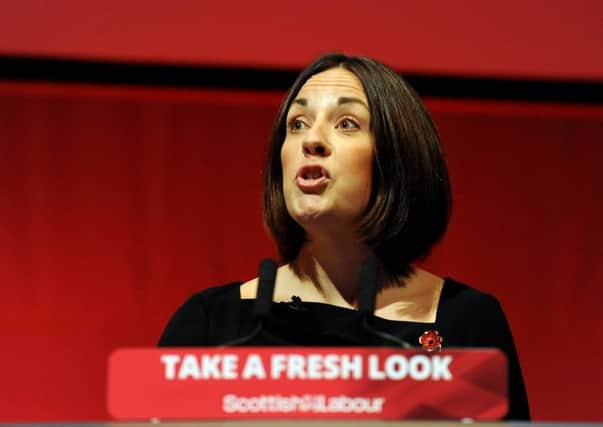Tom Peterkin: Dugdale must improve party position


Joy was written all over the faces of the Corbynista wing of the Scottish party led by the ebullient figure of Neil Findlay, who held court in typically convivial fashion at the bar of the Royal George Hotel. Raving about Jeremy Corbyn’s nod to Keir Hardie in his “sunshine of Socialism” speech, the Corbynistas were cock-a-hoop.
Not quite so visible nursing drinks in the darker recesses of the Royal George were those Labourites at the opposite end of the emotional spectrum. They were the footsoldiers cut from a more moderate political cloth who were struggling to comprehend the rise of the far left.
Advertisement
Hide AdAdvertisement
Hide AdCorbyn’s unprepossessing style, his sports jacket and his left wing rhetoric had left them cold. They quietly expressed dismay that the rise of the far left had made their party unelectable and they had been consigned to years in opposition both north and south of the Border.
Attempting to bestride the fault line before it splinters is the Scottish leader Kezia Dugdale, who has the intensely difficult task of trying to persuade voters that this deeply divided party is somehow capable of challenging the SNP.
The lack of coherence within Scottish Labour was only emphasised by the dominating event of conference, the tortured process to determine Scottish Labour’s position on nuclear weapons.
While the Scottish party is to be applauded for having the guts to hold an honest debate on this touchstone issue, the outcome has done little to clear up the confusion surrounding Labour’s attitude towards Trident.
So against that background, how can Dugdale move to unify her party and push it beyond endless discussions about a defence policy, which, let’s not forget, Holyrood has no jurisdiction over?
The answer lies in one of Scottish Labour’s key policy announcements made in Perth. Dugdale’s proposal to restore tax credits north of the Border was an attempt to draw out the battle lines ahead of next year’s Scottish election.
By taking on George Osborne’s hugely unpopular policy to impose tax credit cuts, Dugdale believes she is promoting a vote winner by maintaining the incomes of around 300,000 Scottish families who face losing an average of £1,000 from April.
As well as providing a contrast between Scottish Labour and the Tories, she has also taken care to create a dividing line between her party and the SNP. Some funding will come from declining the UK government’s tax breaks for those earning more than £43,000, a method that suggests Dugdale has calculated that the SNP depends more on better-off voters than Labour does.
Advertisement
Hide AdAdvertisement
Hide AdThe rest of the cash will come through her refusal to go along with the SNP’s plans to abolish Air Passenger Duty, another policy difference Dugdale hopes her party will coalesce around.
As soon as Dugdale made her intention clear, the SNP attempted to hide behind the constitution, claiming Holyrood would not have the powers to achieve Scottish Labour’s ambition – a claim that fell apart spectacularly yesterday following Alex Neil’s contribution to yesterday’s Holyrood debate on tax credits. It perhaps suggests that Dugdale’s approach will prove fruitful. A key part of Labour’s approach for 2016 is to somehow move political debate beyond the SNP’s constant demands for more powers. Establishing that the new powers on their way to Holyrood are capable of delivering real change is essential if Labour is to build on its perilous position at the polls.